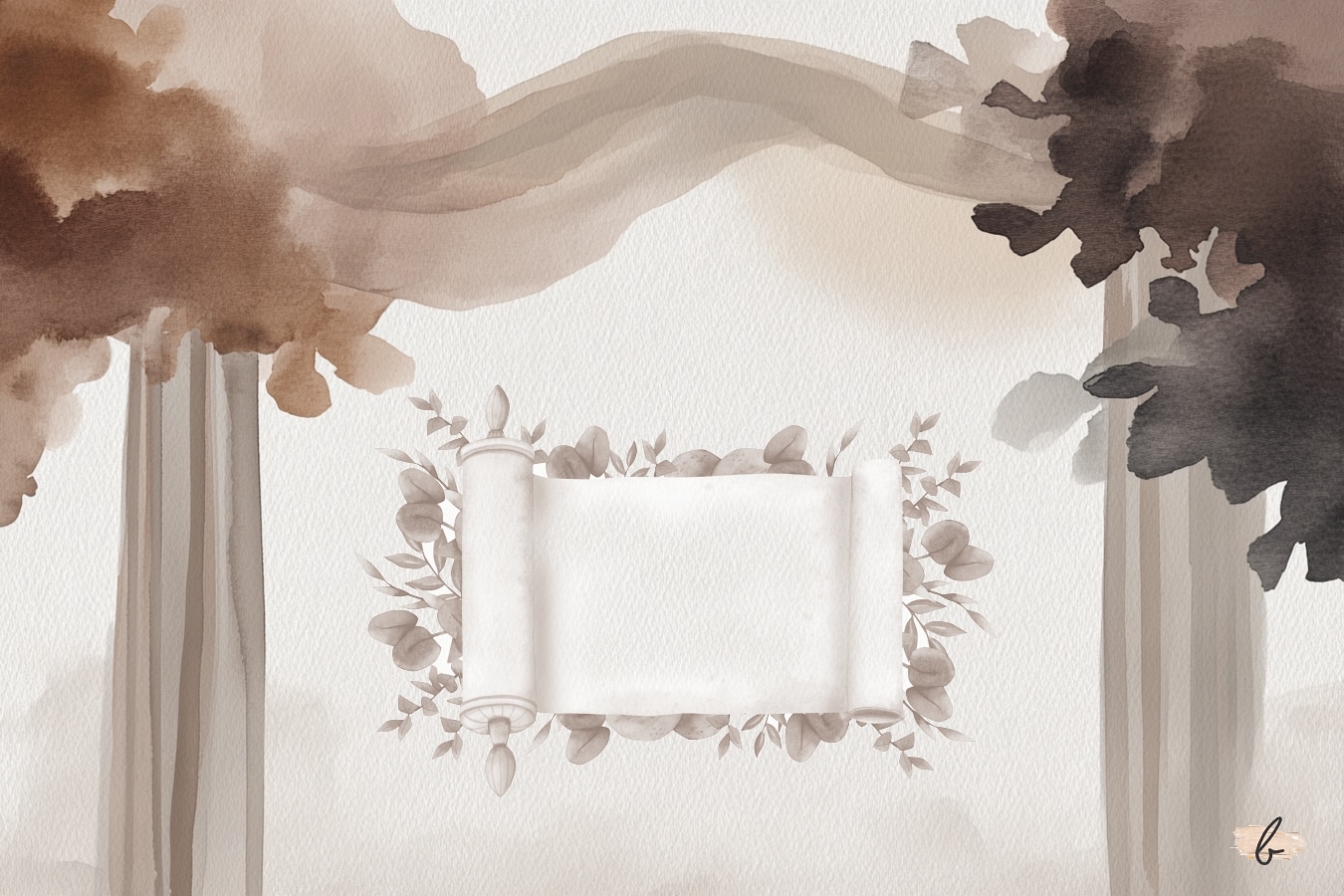Three ways to be in the moment with Hashem this Shavuos
We’re preparing for Shavuos on so many levels—whether through refining our middos according to the Sefiros, or even on a technical plane, by stocking our freezer and fridge—but there’s one unique hachanah that often gets missed.
When I teach kallahs, it is the same component of preparation that I make sure to focus on in our conversations, because in essence, this is who we are right now. As the Ohr Hachaim explains, during the Sefirah days we count toward a state of taharah (seven weeks corresponding to the seven days) in preparation for going under the chuppah with our chosson, Hashem kavyachol. We currently find ourselves in a time period during which we’re inching ever closer to our wedding day and we want to be as prepared as possible.
If we understand what living a life of Torah truly means, we understand just how similar we are to that kallah. At its core, the Torah is a manual through which we can foster a deeper relationship with Hashem. The Zohar teaches that our 613 mitzvos are 613 eitzos for how we can attach ourselves to Him. In other words, when I say that I live a Torah life, I’m essentially saying, “I’m in a relationship with the Creator.” (And He wants me—what an honor!) And so, if I want to know how I can best prepare for receiving His Torah, the answer for that will have something to do with preparing for being in a relationship.
Imagine a kallah focuses all of her attention on setting up a beautiful apartment, stocking it with every gadget and knick-knack. She invests her energy in finding the most exquisite gown and breathtaking headpiece. All of this is wonderful and will certainly be appreciated by her future husband, but what happens if she doesn’t pay attention to another critical area of preparation—preparing her heart for marriage? What happens if all her preparation remains on the technical plane and when the countdown is over and she’s finally married, she finds that she’s emotionally disconnected from her husband? How solid of a relationship is that?

In the Perek of Pirkei Avos that we read immediately before Shavuos (6:6), Chazal remind us that there are 48 ways through which we can truly acquire Torah (= a relationship with Hashem). When we take a look at the list, we find that while some qualities emanate from the mind, others (such as binas halev and simchah), require work of the heart. Our preparation can’t only be about the technical, nor about only learning on a cognitive level. It must also include investment on the heart level, which is actually our innate strength as women. How do we go about that?
If I want to feel fulfilled in a relationship—whether with my husband, a child, myself, and ultimately, Hashem—the only way that can happen is if I move from the technical plane into the heart space. And the most powerful way to make that happen is to put all distractions aside (stop doing, shopping, scrolling, eating, and even thinking) and choose to be present. Presence is about being there in my entirety: I’m here with you, open to hearing, open to sharing what’s on my heart. I just am.
Sounds scary, right? It sure is. Because what happens when I let go of all these protective layers around me? When I stop talking about them or the technical stuff and start focusing on me? The #1 impediment to presence is fear of uncomfortable emotion, which is why we find that we’re secretly relieved when distractions come up. (“Thank you, phone, for ringing just now!”) If there’s something or someone we don’t want to face, we’re happy when we can get away from it. But what’s the fallout? The relationship stays right there, on the surface level. The more present I take the courage to be, the more the relationship can flourish (which is what the yetzer hara is most afraid of—he’s the one who delights in our distractions).
Now that we understand the importance presence plays in our relationship with Hashem, we can appreciate just how much the mitzvah of Sefiras Ha’Omer prepares us for that. Counting the days is all about being in the moment—Hayom Yom… It’s not about yesterday or tomorrow, but rather about today, about right now. And what do I risk when I take the courage to be in the right now? I risk feeling pain. When I stop being distracted, I might notice that certain things bother me. That I feel alone, or like a failure, or just simply unhappy.
And that’s exactly why, when we finish counting, what’s the first tefillah that comes to our lips? Harachaman hu yachzir lanu avodas Bais Hamikdash limkomah… Have you ever paid attention to this tefillah? Isn’t it interesting that davka after the mitzvah of counting Omer we recite a tefillah that is particularly focused on Geulah? What’s the connection? Because our deepest cry for Geulah happens when we realize just how much pain we’re in in this galus. It’s the cry of every galus Yid: Hashem, please redeem me from this uncomfortable place. Galus is just so haarddd!
It’s when we take the courage to be present that the most authentic connection comes to be.
And so, here are 3 ways we can practice being present today so that we can be a truly present kallah on our Yom HaChuppah, this Shavuos:
1. Presence with Self
Set a time for one minute and simply be. In this one minute, make yourself comfortable on the couch or a chair and just sit. Do nothing, gently dismiss thoughts about the past or future, and see what happens. Do you find yourself feeling bored? Uncomfortable? Restless? Suddenly hungry or tired? That’s all good—all a sign that you aren’t yet comfortable with being with yourself. Instead of fleeing the scene, choose the courageous path: Sit with what comes up for you. And even if you have no idea how to deal with whatever you’re feeling, here’s the shortcut to the end goal of all unpleasant emotion: Simply call out to Hashem, just as we do when we count the Omer and being in the present moment brings up the pain of galus. “This is feeling supremely uncomfortable. I don’t know what to do with this, but You sure do. Please help me deal with this so I can feel more joy and tranquility!” There’s no better therapist than the One who created the feeling in the first place…
(An excellent time to practice this [manually checking the time, obviously] is on Shabbos, Hashem’s weekly gift to us that is intended to connect us more deeply to Him, others, and ourselves thanks to its fewer distractions.)
2. Presence with Another
Sit with your husband, child, friend, or loved one for twenty minutes, putting all distractions aside. During this time, do your part to gently steer the conversation away from the technical and into the heartspace. Look this person in the eye, and try as much as possible to be your most authentic self. If you’re the one talking, say what’s really on your heart. If you’re the one listening, refrain from moving into problem-solving mode and let them get it all out.

3. Presence with Hashem
While talking to Hashem in our own words certainly allows space for presence, there’s something especially powerful in reciting words of tefillah that were established by the greats before us. And while every kind of tefillah is precious to Hashem, there’s nothing as connective as a tefillah said with presence. We don’t want to find, after finishing Shacharis or an entire Sefer of Tehillim, that we’ve just paid lip service.
To that end, choose one perek of Tehillim (especially relevant for Shavuos!) that you connect to on a heart level. Look through the perek before you say it, reading the full translation and commentary (I highly recommend the Artscroll Tehillim for this). When you find that Dovid Hamelech’s words resonate deeply with you, say the perek with full concentration. Let the words seep in, the comfort in the beautiful words wash over you. When I tried this a few weeks ago on Shabbos afternoon, I found that a “simple” perek of Shir Hamalos that I’d said countless times before actually brought me to tears.
On Shavuos, we don’t only celebrate a momentous event that happened thousands of years ago. Rather, we’re given the opportunity to re-experience what our ancestors merited then: standing under the chuppah with Hashem. Shavuos of this year is another golden chance to reestablish our relationship with our Creator, to deepen our connection to Him, through His kesubah, His Torah. The more we can be present in this experience, the more we will find that the connection is deepened throughout the year as well. As the Baal Akeidah teaches, our and our family’s connection to Torah throughout the year is directly related to the extent that we desired it on Shavuos. Let’s take advantage of this “special offer,” dear sisters, by taking the time and presence to feel the ache in our lack and connect to that place in us that wants so much more for ourselves and our family. It’s from this place of vulnerability that true tefillah—true connection— happens. May our tefillos be answered in the form of deepened connection to Torah and mitzvos for us and our family all year long. When we feel connected to Hashem, regardless of what we’re going through, life feels so, so sweet.





Wow!! this is so beautiful and meaningful. thank you